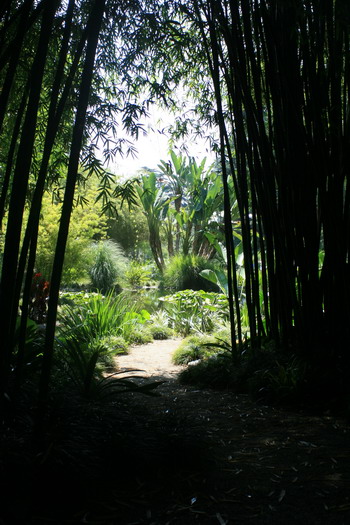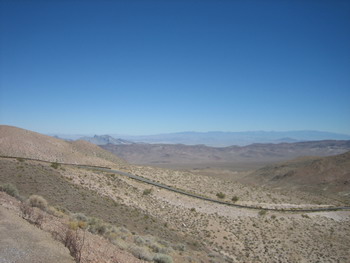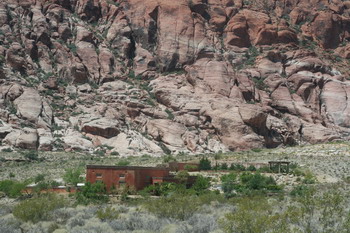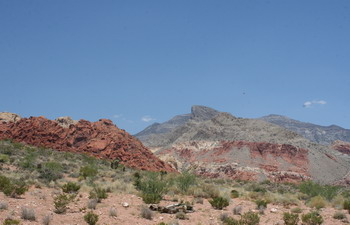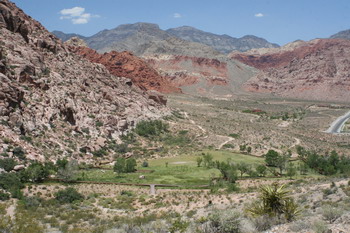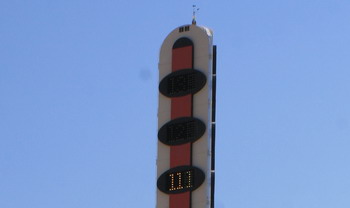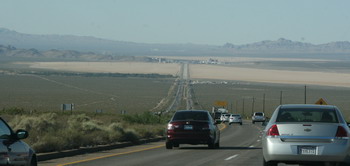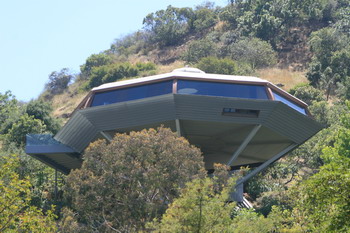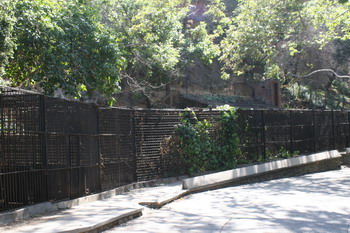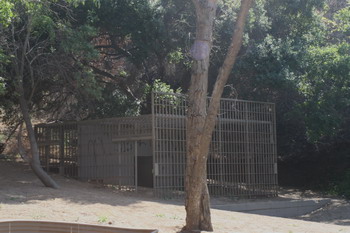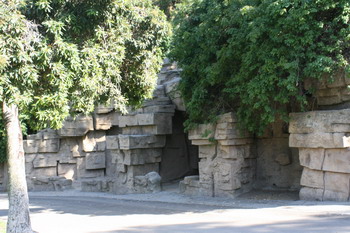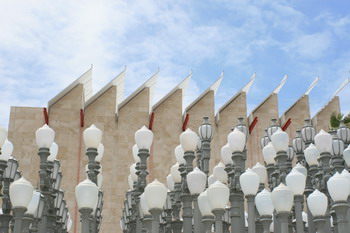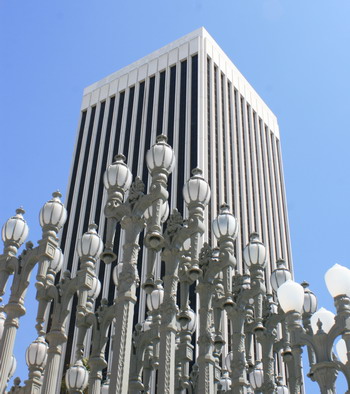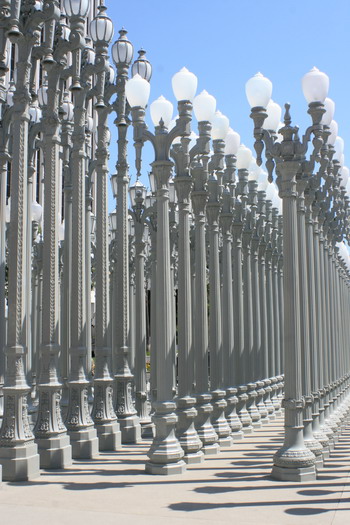There are certainly many reasons to visit the Getty Center in Los Angeles. For me, however, there is only one draw – the architecture.
My personal take on it: If those guys in Europe who peppered the place with their castles (with the height of activities during the 11th to the 15th century) were to look at the Getty Center, they would probably say “good job.” And it is indeed, for me at least, a castle, perfectly transposed and transformed for our present times.
When one arrives over the freeway, the buildings loom overhead, impregnable and indestructible. Interestingly enough the Getty Foundation and the architect underscored this impression by preventing visitors to drive up to the Center. Cars have to be parked at the foot of the hill, the rest of the way visitors are ferried up with a small tram. Once arrived, the impression is completely different: One sees an ensemble of buildings grouped around several courtyards and gardens and there are amazing views down from the hill over all of Los Angeles.
All buildings are huge and either clad with white enameled aluminum panes or travertine in a slightly less brilliant hue. Depending on the cladding the buildings are either light and elegant (aluminum) with amazing angles and curves or solid and fortress like (travertine). While they complement each other, they are interwoven to form a tapestry which gives new delight to the eyes at every corner one turns.
It is very hard to chose just one photo as an example of what the Getty Center is like. So I decided on four out of 200.

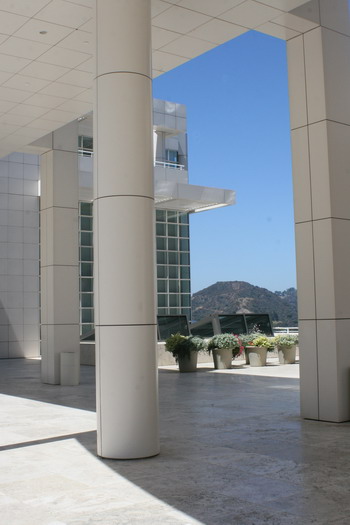

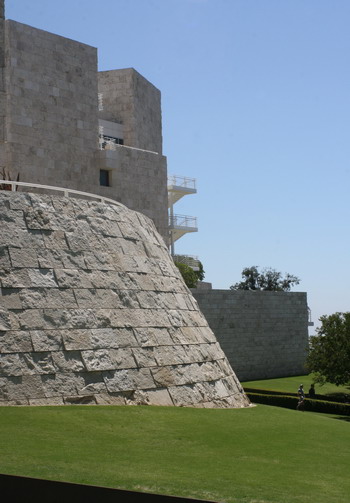
And next time I’ll probably take another 200.
